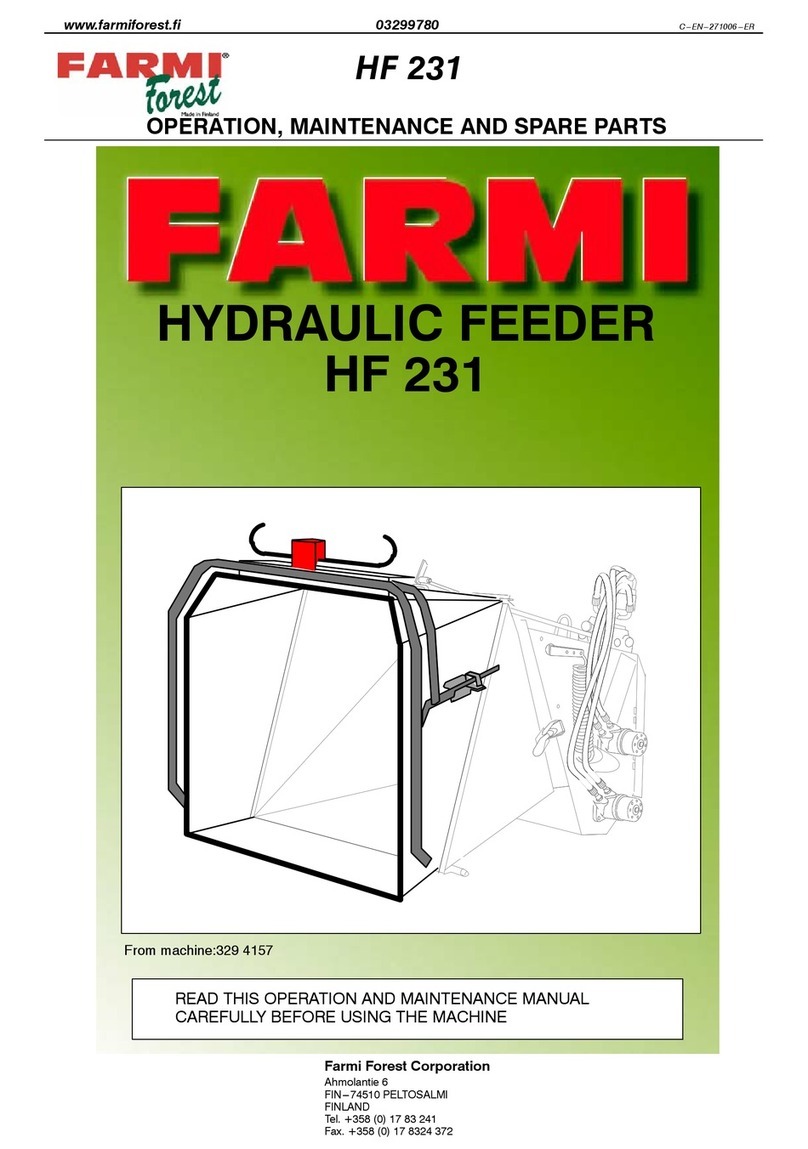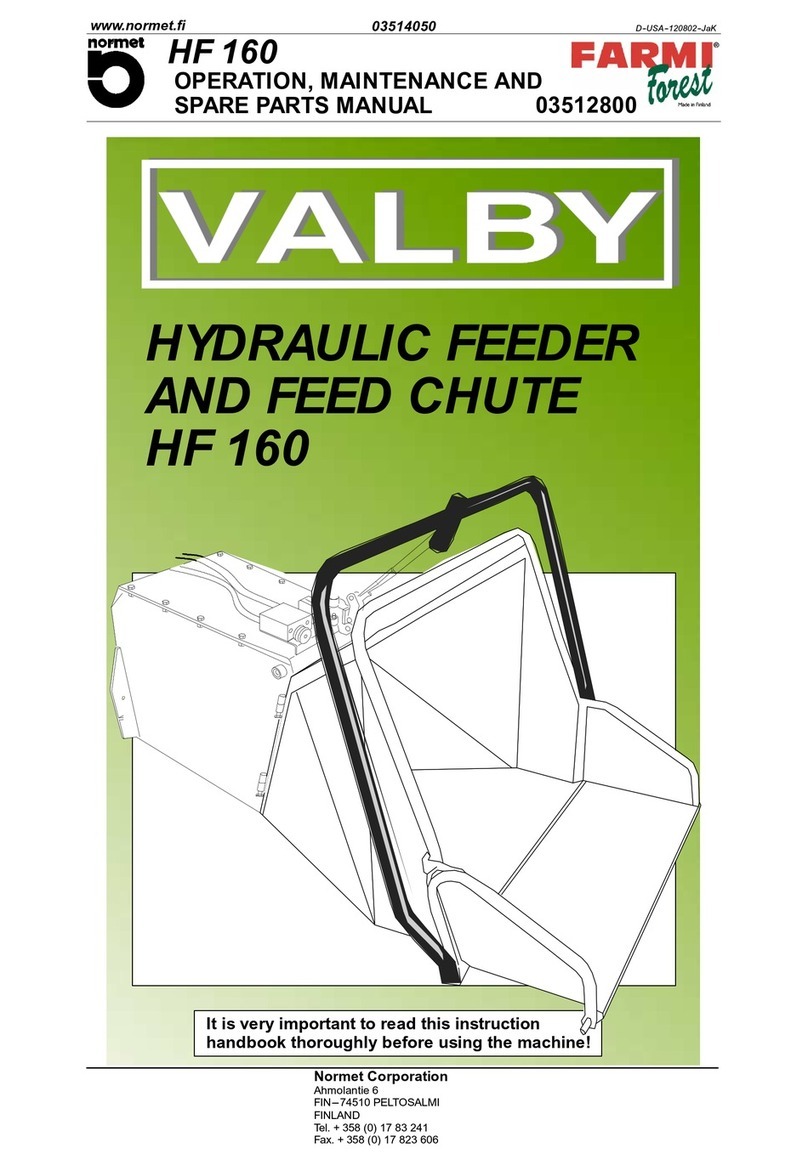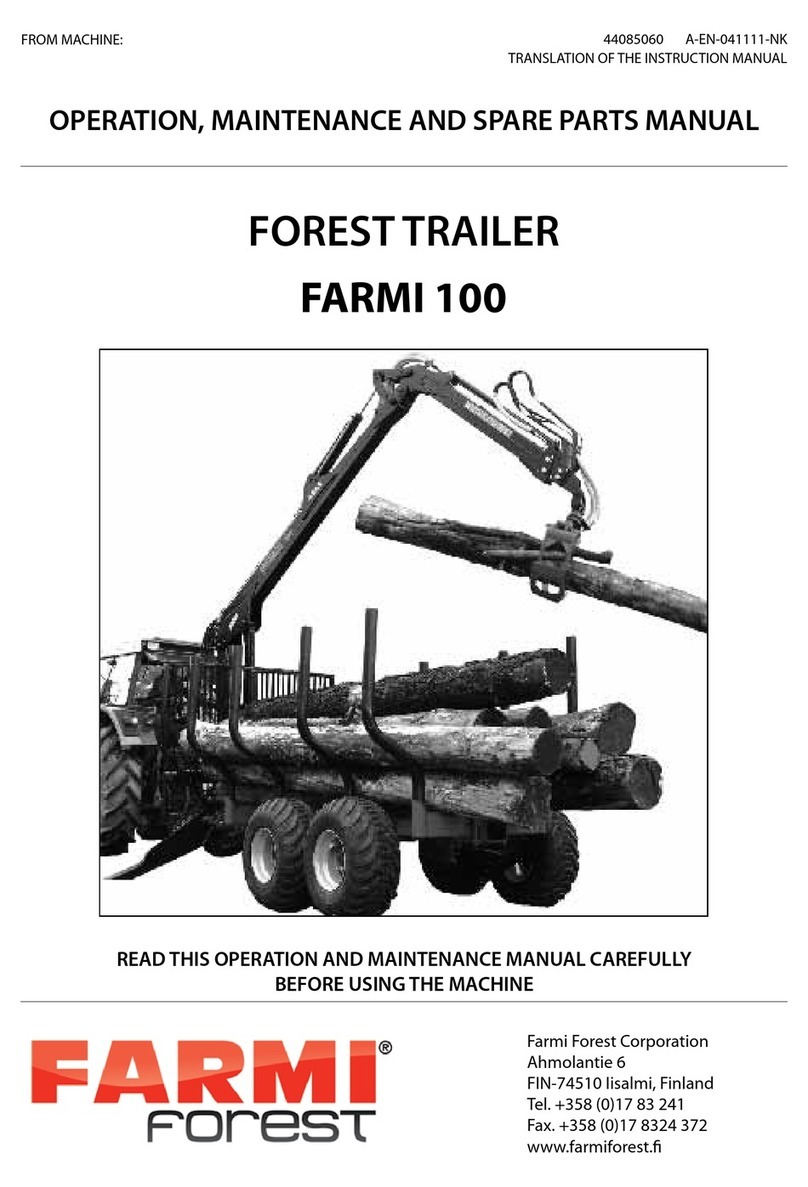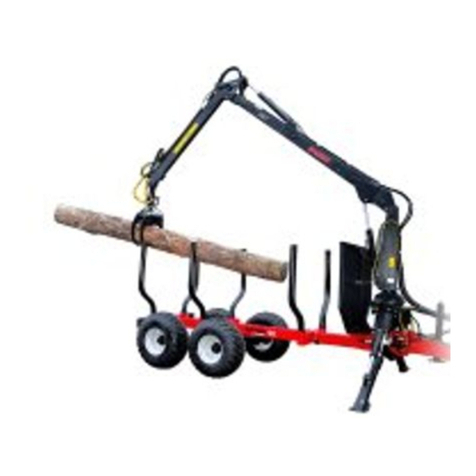CH380HF
7
OPERATION
Many occupational accidents
take place in abnormal
circumstances. Therefore it is
important to take into account
all the possible circumstances
that may arise during operation
of the machine.
Depending on the machine’s type, it will have
diverse safety devices and protectors. These are
meant to protect the machine and its operator,
and they must never be removed or altered.
Never start up or use the machine without all
the safety devices and protectors in place. Also
check the universal joint’s safety equipment and
joins.
Never insert any body part into the machine with
the engine running.
If any faults arise that may jeopardize occupational
safety, turn off the machine.
During operation, the machine’s operator is
responsible for safety in the whole work area.
Work may not be carried out in the presence of
any factors that jeopardize occupational safety.
Exercise extreme caution when hitching /
unhitching the machine from a tractor/trailer.
The machine’s operator must
have constant, unobstructed
visibility of the work area. If
this is not possible, the ope-
rator must work with an assis-
tant.
Look out for moving parts when the machine is
in operation.
Secure the machine against unauthorized and
accidental operation (e.g. moving when parked)
whenever it is left unattended.
Never leave the machine running unattended.
Avoid causing fast, stroke-like loading.
Never exceed the given operating values.
All safety and warning signs on and in the
machine must be legible and intact.
The machine may not be operated by persons
who are unwell or under the inuence of drugs
or alcohol.
•
•
•
•
•
•
•
•
•
•
•
•
MAINTENANCE
The machine may only be serviced and repaired
by professionals.
Electrical and hydraulic faults may only be
repaired by authorized professionals.
In cases requiring welding, contact
the manufacturer.
Turn off the tractor engine and disconnect the
universal joint before beginning service or
maintenance actions.
Ensure that there is no pressure in the hydraulic
system.
Take out the key from the tractor’s ignition for
the duration of the servicing or maintenance.
Check that the power is off from the machine
you are working on.
When servicing the machine, place it on a level
surface and ensure that it cannot be moved.
Observe the service intervals and annual safety
inspections.
All spare parts and equipment must fulll the
manufacturer’s requirements. This can be
guaranteed by using original parts.
Put all safety devices back into place immediately
once servicing or maintenance is complete.
When lifting the machine,
check that the lifting/hoisting
equipment is in perfect
working order. Check the
weight of the machine before
lifting it. Choose lifting
trajectories so that they do not
cause any danger.
Many countries have specic legislation on lifting,
hoisting cables and hoists. Always comply with local
safety regulations.
OILS AND LUBRICATION
Always use the oil types recommended by the
manufacturer. Other types of oil may cause
faults or improper operation of the equipment,
which could lead to serious damage to people or
property.
Never mix different liquids or oils.
Always follow the manufacturer’s lubrication
instructions.
Use control equipment carefully until the hydraulic
oil has had time to reach its operating temperature.
•
•
•
•
•
•
•
•
•
•
•
•
•
•
DANGER!
!
CAUTION!
!
CAUTION!
!

































